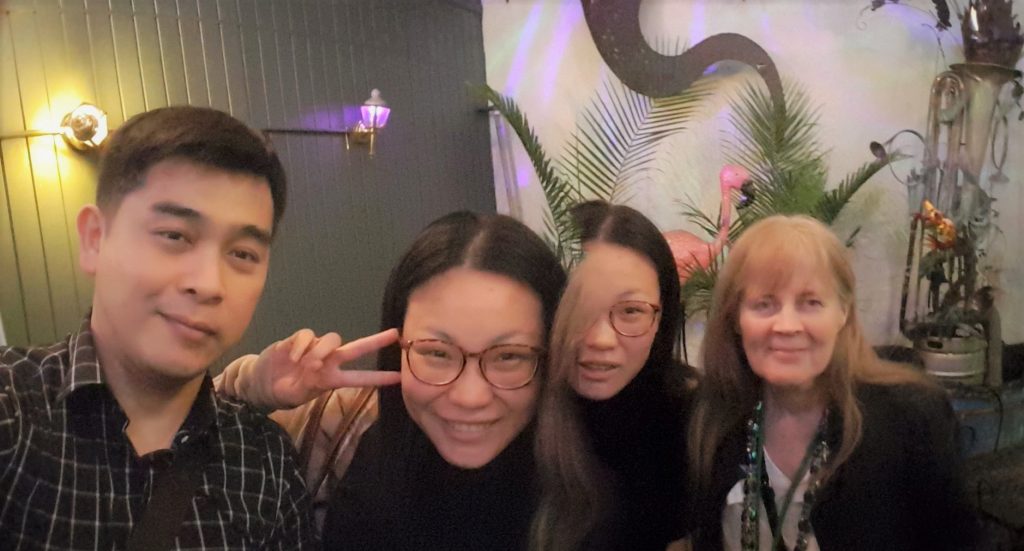The latest issue of the American Journal of Economics and Sociology (AJES), Volume 80, Issue 2, has just been published. This is not just another special issue. It is one specially put together in honour of Anne Haila, the first full professor of urban studies in Finland. Unlike previous special mentions such as, an obituary in the International Journal of Urban and Regional Research, and a special issue in the Finnish Journal of Urban Studies, and my article in Land and Liberty, this special issue analyses the influences of Anne Haila. Contributors are brought together from around the world to share their urban land-related research papers and reflections on Anne Haila’s ideas, methodology, and core arguments.

Many of these contributors knew Haila personally. Consider K.C. Ho, for instance. He knew Haila well, both personally and professionally. Some, like Josh Ryan-Collins, might have been a little distant, but they communicated with Haila about research approach and other professional questions related to urban economics and urban studies more generally. Elliott Sclar was connected to Anne Haila in multiple ways. Not only did he review Haila’s book in the Review of Radical Political Economics, but he was also a collaborator with Anne’s American ‘supervisor’, Matthew Edel, with whom Sclar co-wrote Shaky Palaces: Homeownership and Social Mobility in Boston’s Suburbanization and ‘The distribution of real estate value changes: Metropolitan Boston, 1870–1970’ published in the Journal of Urban Economics. At the University of Helsinki where Haila worked, too, many of her former colleagues and students (including me) have contributed to the issue. Therefore, these are well placed to reflect on the ‘continuing relevance of Anne Haila’s analysis of rent and power’, the title of the special issue.

The issue begins with a foreword by Clifford W. Cobb, the Editor-in-Chief, indicating that the late Anne Haila ‘blurred the boundary between scholarship and activism.’ Next is the introduction where Franklin Obeng-Odoom discusses Henry George’s methodology in Haila’s work as ‘the Invisible Man’ in Haila’s land rent theory.
The foreword and the introduction also set the stage for the original contributions to the issue. Made up of 16 articles, the issue is the largest and most well-researched work on Haila’s political economy yet.
1) K. C. Ho’s article on land and Housing in Singapore builds on Haila’s concept of property state which describes how Singapore and Hong Kong have gained fiscal rent from leasing urban land, and especially in Singapore, how public land is treated as a public good.
2) Elliott Sclar examines the financialisation of transferable development rights (TDRs) in the central business district of New York City. Based on Haila’s approach to financialisation, he argues that zoning is used as a legal tool in facilitating land financialisation.
3) Bokyong Shin and Chaitawat Boonjubun pay attention to how the media in South Korea have contributed to the construction of the ‘land as a commodity’ notion and at the same time, promoted ‘the culture of property.’ Their findings reiterate that the property mind, or the people’s appetite for property, is socially constructed.
4) Yung Yau and Tin Choi Cheung’s article, based on the concept of property state, offers an investigation into how a public-private partnership model emphasising growth coalitions has been affected by a group of suburban landowners in Hong Kong.
5) Josh Ryan-Collins analyses the relationship between the private landed property (PLP) and the financial sector in the U.S., UK, and Australia. He points out that Haila was aware of problems that stem from land being used as a financial asset many years before the occurrence of the global financial crisis in 2008.
6) Yiming Wang and Jie Chen examine the ways in which the local state in Shanghai allows private investors to manage urban commons, which resulted in the socio-spatial exclusion of particular land users. This essay discusses the link between the ambiguous property rights and the dissipation of the commons.
7) Rafaelle Bertini and Abdallah Zouache investigate the relationship between fuzzy property rights in land and the agricultural sector in Middle Eastern and Northern African (MENA). The political aspects of property rights, land tenure, and the types of ownership are discussed.
8) Chaitawat Boonjubun, Anne Haila, and Jani Vuolteenaho offer an unconventional study of urban commons. This article unpacks a type of the commons which is faith-based, pro-poor, and non-Western embedded in Buddhist temple land in Thai cities. It points out that this type of urban commons can be an alternative to the privatization and financialisation of urban land.
9) Sefer Kahraman discusses the uses of religious waqf land in Bangkok. He argues that the value of waqf land solely derives from its use, and this type of land can be considered as a solution to the housing problem.
10) Haoxuan Sa examines and the role and the motives of a shareholding cooperative which is an economic organisation based on collectively owned land, formed by urban villagers in Chaoyang City, China. The results demonstrate that collective ownership did not lead to the tragedy of the commons, and social relations and ethical concerns can be deep-rooted in collective economic activities.
11) A.B. Assensoh and Yvette M. Alex-Assensoh investigate the link between reparations and the political economy of land. They looked at the reparations made to enslaved Africans in the form of ‘forty acres and a mule’ in the past. They argue that there are immediate reparations that the U.S. government must provide, in a modern form, to Black Americans who have been repeatedly affected by long-running racially biased, discriminatory policies in the 21st Century.
12) John Pullen’s article assesses the use of the government infrastructure investment dividend (GIID) method in distributing the financial profits from urban development projects to the government.
13). Franklin Obeng-Odoom discusses the limitations of the recent work on economic insanity of Richard Giles, a renowned Australian Georgist political economist.
14) Rini Rachmawati analyses how commoning urban land can prevent the threat of flooding and evictions. Her case studies include two public housing projects along the Code River in Yogyakarta, Indonesia.
15) Franklin Obeng-Odoom examines the efforts of cities to replace oil with renewable energy by considering the socio-spatial relations within an ecological context. The case of Port Harcourt, Nigeria is discussed. He considers three interconnected concepts – rent theft, social costs, and just transition – and analyses actions that could bring about socio-ecological justice to cities.
16) Ulrich Duchrow provides a review of Franklin Obeng-Odoom’s recent book project entitled The Commons in an Age of Uncertainty: Decolonizing Nature, Economy, and Society. He points out that Obeng-Odoom’s work provides an alternative to the ‘Conventional Wisdom’ and the ‘Western left consensus’. The book focuses on commoning the land and how to achieve a just ecological political economy.
All these papers, particularly the ones by members of the Helsinki School of Critical Urban Studies, attempt to address the key questions that Academy Professor Anne Haila’s Urban Land Tenure Project, funded by the Academy of Finland, has focused on. To illustrate the point by zooming in on my own contribution, together with my co-authors, Anne Haila and Jani Vuolteenaho, our article analyses the uses of religious land by drawing on a case study of Buddhist temple land in urban Thailand. We investigated the ethical land-use decisions and social relations around the leased temple land. We found that this type of religious land which acts as a faith-based and pro-poor commons can offer a solution to resolve the urban land question and housing question. The idea of this study derived from a conversation that I had with Anne Haila in 2015 on how Buddhist temple land has been used. We were amazed after learnt that Thai law prohibits Buddhist temple land to be sold and the temples have obtained the land primarily from donations. This stimulated her to begin a preliminary study in Thai cities in early 2016. I believe that this study was an initial step of her research on real-world cases of land (still) being used just for living and altruistic activities, which is part of the Land Tenure Project. As a matter of fact, in August 2019, one month before Anne Haila’s passing, she and I conducted our fieldwork in Ayutthaya, the old capital of Thailand. This appeared to be her last visit to Thailand.
Papers, in the special issue, by the members of the Helsinki School of Critical Urban Studies have been well-received already by the international community of scholars. These papers (including mine) will be virtually presented at the International Conference on Sociology of Urban and Regional Development of the RC 21, in the ‘Rent-seeking: the new game in town. The legacy of Anne Haila (1953-2019)’ session, organised by Barbara Pizzo, Serena Vicari Haddock, and Marisol Garcia, on 15th July 2021.
I believe that Anne Haila would have been delighted to know, through this AJES special issue, how much her work has inspired, and will continue to inspire, urban scholars and thinkers around the world.
Overall, this special issue makes a significant contribution to AJES, to Georgist political economy, to the Academy of Finland, to social policy, and to critical urban studies.




